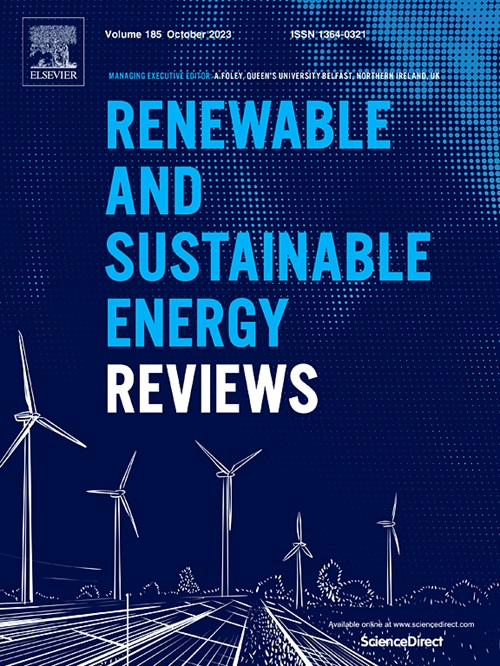Sustainable microgrids design with uncertainties and blockchain-based peer-to-peer energy trading
IF 16.3
1区 工程技术
Q1 ENERGY & FUELS
引用次数: 0
Abstract
A sustainable microgrid based on renewable energy (RNE) sources is a useful solution to reduce the environmental impact and meet customer demand as it offers advantages on the goals related to the economy, environment, and society. Several previous studies have applied peer-to-peer energy trading (P2P-ET) as a feasible solution to reduce the power loss during power supply over long distances. Due to the intermittent nature of RNE sources and demand load, it is challenging to control and manage the operation and distribution of microgrids in P2P-ET. However, the availability and the number of other nearby microgrids needed to connect to microgrids through electric cables in P2P-ET and the mechanisms to manage and balance the power between supply and demand have not been investigated in the current literature. Therefore, this paper examines the sustainable microgrid design problem with P2P-ET under blockchain application, time value of money, elasticity coefficient of demand, and uncertainties to maximize overall earnings and minimize the collective environmental expenses while meeting customer demand. The two-phase stochastic programming is integrated with fuzzy probabilistic programming to determine the quantity, site, type of RNE, and capacity of renewable distributed generation units, the quantity of other nearby microgrids and electric cables required for connection in the P2P-ET, the electricity flows, and dynamic pricing mechanisms. The results demonstrate that the use of the blockchain application in the suggested model increases overall earnings by 14. 75% and reduces collective environmental expenses by 13.25% compared to the case without the blockchain application.

求助全文
约1分钟内获得全文
求助全文
来源期刊

Renewable and Sustainable Energy Reviews
工程技术-能源与燃料
CiteScore
31.20
自引率
5.70%
发文量
1055
审稿时长
62 days
期刊介绍:
The mission of Renewable and Sustainable Energy Reviews is to disseminate the most compelling and pertinent critical insights in renewable and sustainable energy, fostering collaboration among the research community, private sector, and policy and decision makers. The journal aims to exchange challenges, solutions, innovative concepts, and technologies, contributing to sustainable development, the transition to a low-carbon future, and the attainment of emissions targets outlined by the United Nations Framework Convention on Climate Change.
Renewable and Sustainable Energy Reviews publishes a diverse range of content, including review papers, original research, case studies, and analyses of new technologies, all featuring a substantial review component such as critique, comparison, or analysis. Introducing a distinctive paper type, Expert Insights, the journal presents commissioned mini-reviews authored by field leaders, addressing topics of significant interest. Case studies undergo consideration only if they showcase the work's applicability to other regions or contribute valuable insights to the broader field of renewable and sustainable energy. Notably, a bibliographic or literature review lacking critical analysis is deemed unsuitable for publication.
 求助内容:
求助内容: 应助结果提醒方式:
应助结果提醒方式:


